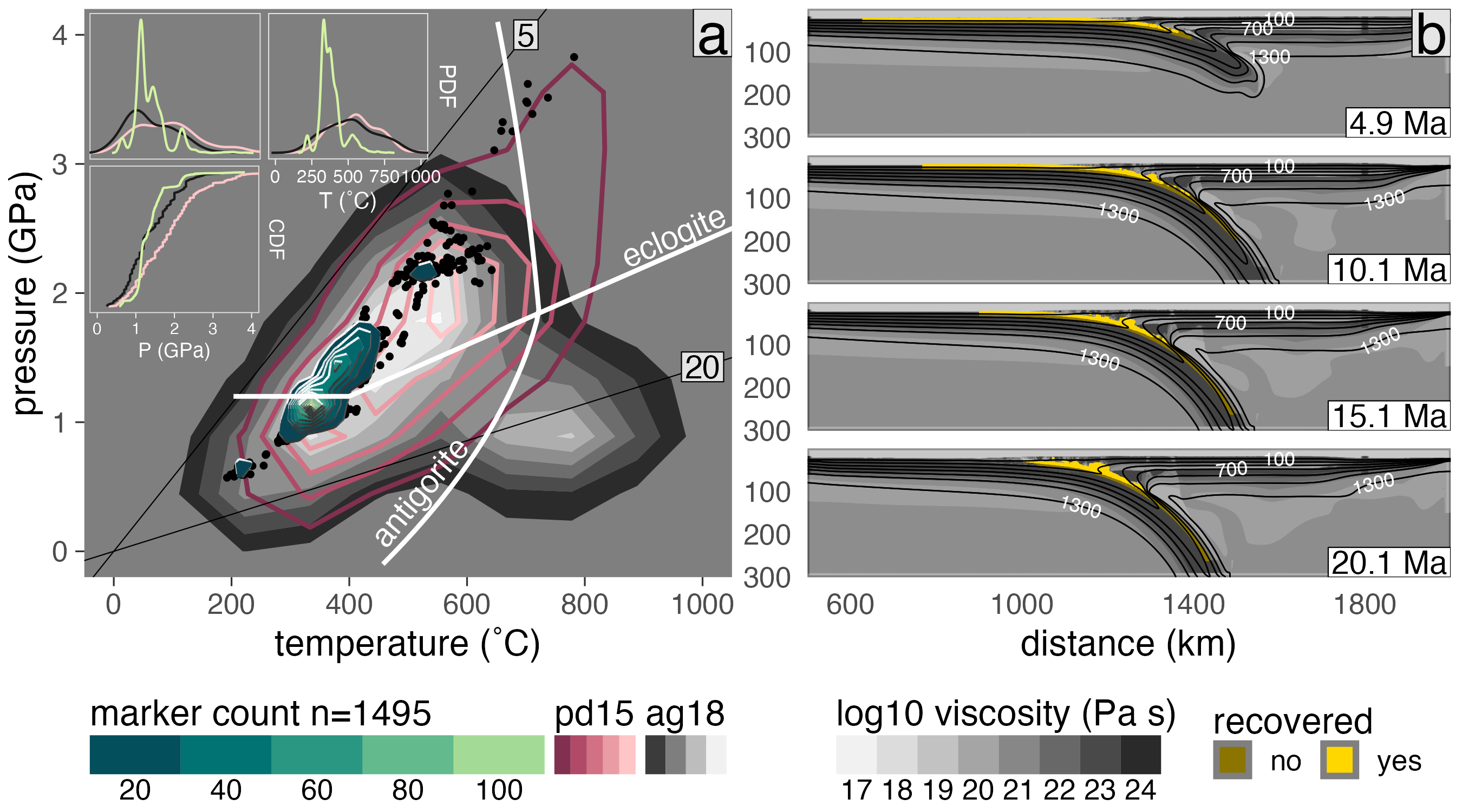Computing rates and distributions of rock recovery in subduction zones
This work investigates and how many rocks get detached from subducting oceanic plates beneath convergent margins. Classification of over one-million numerical markers (representing rock fragments) from 64 numerical experiments indicates that rocks rock recovery likely happens at discrete depths, rather than continuously along the subduction interface.
Geochemistry, Geophysics, Geosystems published the manuscript on May 18, 2023. You can find the article here.

Figure: Summary of marker recovery for model cda62. (a) Pressure-temperature diagram showing the frequency of recovered markers (black points and green Tanaka contours) in comparison with the pd15 (solid red contours) and ag18 (filled gray contours) data sets. Thin lines are thermal gradients labeled in °C/km. Reaction boundaries for eclogitization of oceanic crust and antigorite dehydration are from Ito and Kennedy (1971) and Schmidt and Poli (1998), respectively. Marker counts (Tanaka contours) are computed across a 100 × 100 grid (0.04 GPa × 10°C). (insets) Probability distribution functions (top insets) and cumulative distribution functions (bottom inset) comparing P and T distributions between numerical experiments (green lines) and natural samples (pink lines: pd15, black lines: ag18). (b) Visualization of log viscosity in the model domain showing the major modes of marker recovery along a relatively thick subduction interface that tapers near the viscous coupling depth.
Coauthors:
- Matthew Kohn (Boise State University)
- Taras Gerya (ETH Zürich)
Acknowledgement
We gratefully acknowledge high-performance computing support from the Borah compute cluster (https://doi.org/10.18122/oit/3/boisestate) provided by Boise State University’s Research Computing Department. We thank two anonymous reviewers who provided thoughtful feedback that greatly improved the manuscript. We also thank Whitney Behr for her editorial handling. This work was supported by the National Science Foundation Grant OISE 1545903 to M. Kohn, S. Penniston-Dorland, and M. Feineman.
Open Research
All data, code, and relevant information for reproducing this work can be found at https://github.com/buchanankerswell/kerswell_et_al_marx, and at https://doi.org/10.17605/OSF.IO/3EMWF, the official Open Science Framework data repository (Kerswell et al., 2023). All code is MIT Licensed and free for use and distribution (see license details).